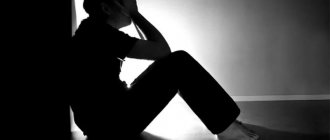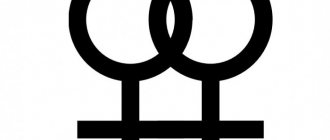Definition
The bladder and urethra form part of the urinary system. The bladder stores urine, and the urethra is the tube that drains urine from the bladder during urination. The urinary sphincter muscles at the top of the urethra create a tight seal around the opening of the bladder to prevent urine from leaking out.
Stress urinary incontinence occurs when any sudden pressure on the urethra or bladder causes the urethral sphincter to open, allowing urine to flow out of the bladder.
In mild cases, urine may leak only during activities such as:
- severe sneezing
- cough
In more severe cases, urinary incontinence may occur during less forceful movements, such as:
- incline
- walking
- standing
Disease prevention
In order not to suffer from painful discomfort, you need to reduce the number of factors that can provoke this condition. Doctors give a number of recommendations that can prevent problematic urination:
- observe the drinking regime. Enough fluid intake every day will save you from developing many diseases. The approximate norm is up to 2 liters of clean water. A lack, as well as an excess of water, is fraught with complications, so you need to know when to stop, and it is better to ask your doctor how much fluid you need to consume for specific diseases;
- adhere to the urination regime. You can “teach” your bladder to empty itself by the clock. For example, in the morning, at lunchtime, upon returning home, before bed. Even if you don’t really want to, you need to visit the restroom to reinforce the habit. Over time, the body will be ready to excrete urine on a schedule;
- eliminate excess weight. To do this, you can consult with a nutritionist and other specialists, find out the cause of obesity, ways to get rid of excess weight;
- give up bad habits - they do nothing but harm;
- reduce consumption of coffee and salty foods;
- avoid constipation - foods containing a lot of fiber will help improve bowel function. These are fruits and vegetables. Before going to bed, a glass of plain kefir without sweeteners will not hurt. Herbal laxatives help with chronic constipation. They should be taken after consultation with a specialist in the required field;
- strengthen the perineal muscles before pregnancy to minimize the risk of ruptures;
- maintain a positive mood and lead an active life.
Symptoms of stress urinary incontinence
The main symptom of stress urinary incontinence is leakage of urine during physical activity. The amount of urine leaking from the bladder can vary from a few drops to enough to seep through clothing.
Activities that may cause urine to leak:
- sneezing
- cough
- laughter
- lifting heavy objects
- getting out of the car or standing up
A person with stress urinary incontinence may not have the symptoms associated with other types of urinary incontinence, such as not experiencing the urgent or uncontrollable need to urinate as they would if they had an overactive bladder.
Preventive recommendations
At the first signs of the disease, even the most minimal ones, you should contact a specialist without hesitation. He will provide timely assistance, and surgery may not be required. To avoid stress incontinence, you should follow several recommendations:
- Monitor the frequency of urine output. Evacuation must take place in the correct position. The body should be slightly tilted and your hands should be placed on your legs, in front of you. Relax completely, stomach in a calm position. When urine comes out, the body should not tense; when it is finished, the pelvic floor muscles will slightly contract.
- Watch your diet and avoid junk food. Excess weight will only contribute to the appearance of involuntary urination.
- Give up bad habits.
- When signs of stress occur, relax and think positive thoughts. The absence of nervous disorders will help to avoid many diseases.
- Keep your genitals warm. Hypothermia can contribute to the development of pathology.
- Don't sit cross-legged. You can do this from time to time, but constantly sitting in this position leads to problems with the veins and the development of incontinence.
Do physical activity every day, walk. It is worth visiting doctors regularly and undergoing preventive examinations. A specialist can notice the symptoms of the disease even at an early stage, when the disease does not cause major problems.
It is important to immediately identify the pathology, since a woman’s life changes dramatically with this disease. It is difficult for her to appear in society, wear tight clothes and feel confident. Take care of your health, follow the rules of prevention, then you can avoid the appearance of an unpleasant pathology.
Complications
Although stress urinary incontinence is unlikely to cause serious health complications, it can have a significant impact on quality of life. Stress urinary incontinence may be accompanied by the following symptoms:
Skin irritation
Urine leakage causes moisture to accumulate on the skin around the groin. This can lead to localized inflammation and irritation of the skin.
Depression
Urinary incontinence can make you feel awkward or anxious when interacting with others. People who avoid socializing may experience social isolation and depression.
Pharmacotherapy
The selection of drug therapy is carried out individually, taking into account concomitant diseases and the woman’s age, which is necessary to minimize the risks of side effects.
For stress incontinence, including urinary incontinence when coughing, drug therapy is ineffective and is associated with a large number of side effects.
Muscle tone can be influenced by influencing the α-adrenergic receptors of the smooth muscle cells of the urethra.
Despite the fact that many groups of drugs have been registered for drug therapy of stress incontinence, today 2 are recommended for use:
- 1Duloxetine. According to recent studies, the effectiveness of this drug for the treatment of SUI was virtually no different from placebo. One study showed that the effectiveness of the drug increases when it is prescribed together with training of the pelvic floor muscles. It was concluded that duloxetine should only be prescribed to patients with SUI if the goal is not treatment, but only symptom reduction. The drug has many side effects.
- 2Estrogen. Local use of estrogen-containing drugs in women is quite effective during menopause. Systemic administration of estrogens (tablets and other oral forms), on the contrary, worsens the course of the disease.
Diagnostics
Any amount of urine leakage is not normal. Therefore, it is necessary to consult a doctor even if there are only a few small drops of urine leakage.
The diagnostic procedure for stress urinary incontinence usually consists of the following steps:
- History
to identify possible causes, such as:
- pregnancy
- recent surgery
- pre-existing lung disease
- physical examination
- pad test, which involves wearing an absorbent pad for 1 or 24 hours so a doctor can determine the amount of urine over a given period
- Urinalysis
: The doctor can detect the presence of blood or infection. - Bladder Imaging
: A medical imaging test (ultrasound with residual urine) to show how much urine remains in the bladder after urination. - Cystoscopy
: A procedure that allows the doctor to look into the bladder using a tube with a tiny camera attached.
Classification
The current international society involved in the diagnosis and treatment of incontinence has established certain forms for different types of pathological condition:
- urgent - involuntary leakage of urine directly from a sudden desire to empty the bladder;
- stressful (with tension) – occurs when coughing, sneezing, tension;
- mixed – includes signs of urgent and stress types;
- constant – urine leaks regardless of external factors;
- Enuresis – voluntary loss of urine;
- nocturnal enuresis - the same as the previous type, but during sleep;
- other types - during sexual intercourse and other situations.
The simplest classification used by urologists includes 4 main types of incontinence: imperative, stress, mixed and the last type, which includes other forms.
Treatment of stress urinary incontinence
Treatment for stress urinary incontinence may consist of a combination of home treatment and medication.
How to treat stress urinary incontinence at home?
You can try the following lifestyle changes to control urinary incontinence:
- Eat a diet rich in fiber to prevent bladder pressure from constipation
- Quitting smoking to prevent pressure from chronic cough
- maintaining a moderate weight
- performing pelvic floor exercises to strengthen the muscles that support the bladder
If home treatments do not relieve stress urinary incontinence, your doctor may recommend a device to help prevent urinary incontinence. Some examples include:
- Non-disposable pessaries: Specially fitted rings that a doctor places in the vagina to support the bladder and urethra.
- Disposable pessaries: These can be placed in the vagina for up to 8 hours to support the bladder and urethra.
- Penis clamp: A device that applies gentle pressure to the urethra to prevent urine from leaking during daily activities.
Surgical methods of treatment
Doctors may sometimes recommend surgery to treat stress urinary incontinence. There are several different surgical methods available, and you should talk to your doctor to find out which one would be most appropriate. Some possibilities include:
- Urethral injection: An injection that uses fillers to increase the size of the urinary sphincter muscles. This expansion helps the sphincter close the opening of the bladder more effectively.
- Sling surgery: A procedure that places a small strip of material under the urethra to stabilize and support it during activities.
- Bladder neck suspension: This procedure attaches the bladder neck and urethra to a ligament that runs along the pubic bone. This helps protect the bladder and urethra from downward movement and accidental opening during activity.
- Artificial sphincter: a procedure that allows men to control their bladder emptying. Includes installation of a device consisting of the following three parts:
- a fluid-filled cuff that acts as an artificial sphincter around the urethra
- a fluid-filled balloon inside the abdominal cavity that helps regulate pressure in the bladder
- a pump inside the scrotum that a person can manipulate to control bladder emptying
Postoperative incontinence
Frequent urination in men can be caused by surgical interventions in the treatment of the prostate gland and urinary tubule:
- urinary incontinence after prostatectomy – surgery to remove the prostate for cancer;
- adenomectomy – removal of a prostate cyst;
- transurethral resection;
- surgical interventions for structural urethral disease;
- operations to eliminate traumatic injuries.
Postoperative urinary incontinence in men is considered a common case of stress incontinence, which can go away on its own in the first year and a half. Complex forms require medication, special exercises, and physiotherapy. Sometimes additional surgery is performed to correct the functioning of the urinary canal. Additional consultation and selection of special treatment is required individually in each individual case.









